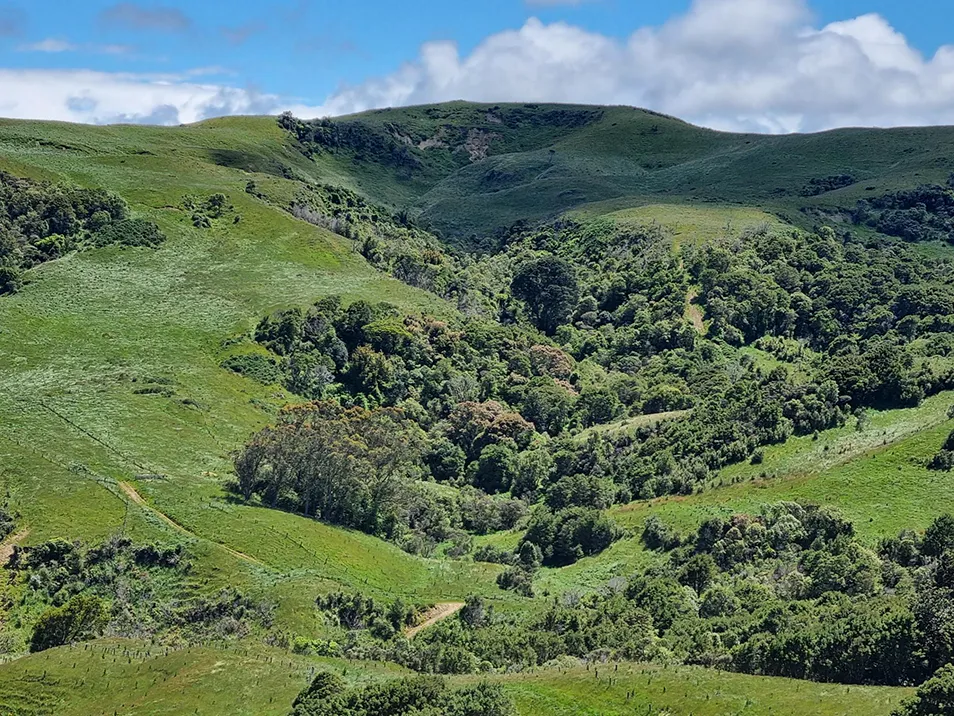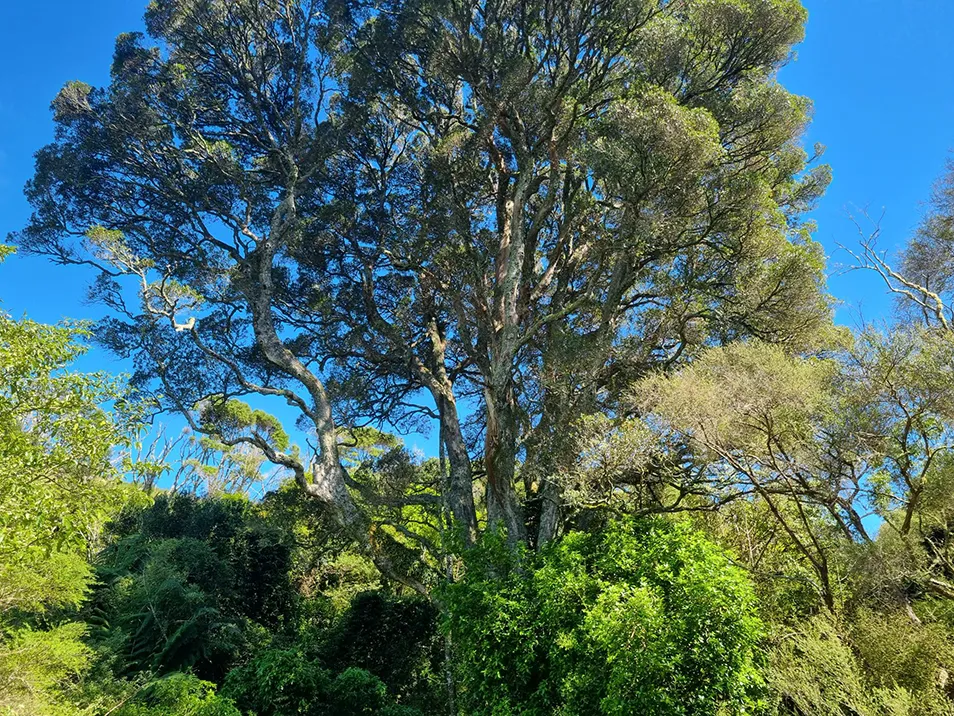Having stood in place for more than half a millennium, a great northern rata – likely the last of its kind in the eastern Wairarapa – was deserving of special protection, according to New Zealand Carbon Farming (NZCF).
To further enhance the protection of this majestic tree, which is located in the heart of an area of hill country NZCF is managing under its transition regime to native forest, the organisation has engaged with the QEII National Trust to establish a permanent covenant over the area surrounding the rata.
The QEII National Trust is an independent charitable trust that partners with private landowners to protect spaces of ecological and cultural significance throughout New Zealand. NZCF currently has 17 areas with QEII protections in place across its nationwide conservation estate.
NZCF National Land Manager John Miller says when NZCF purchased the property with the intention to transition an area of over two thousand hectares into native forest, it had some idea of how significant the ancient tree is.
“It is a large property, but the tree is visible from two to three kilometres away,” says John. “And when you get up close, it really is impressive.”

The great northern rata towering above surrounding native forest in the eastern Wairarapa
Likely missed when the area was extensively deforested to make way for farming, the tree – estimated to be between 500 and 600 years old – dates from a time when mature native forest covered most of the eastern Wairarapa.
Having assessed the tree, the Trust believes it is likely one of the only examples of the great northern rata species naturally occurring in the region – with ‘genetics that are well worth preserving’.
John says a lot of the land in the area has very little in the way of remnant native trees. Those surviving species form an important seed source for NZCF’s actively managed regeneration programme.
“As a native seed source, this area would be very important to us anyway, so we’d be working to protect it,” says John. “But we were happy to create the added layer of the QEII covenant, which will protect the site in perpetuity.”
John says the work NZCF is doing in its management programme, particularly in the professional pest hunting operation to remove deer and other animal pests from the site, means they already meet the requirements of the covenant.
“Essentially what NZCF is doing is creating a large-scale conservation reserve that we are converting back to biodiverse native forest across the country. So our approach is consistent with what QEII is doing in many small areas of individual private land, but on a very large scale.”

The great northern rata emerging out of surrounding native forest